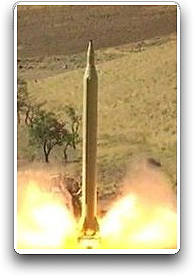Iran is planning to launch animals into space. According to Mohammed Ebrahimi from Iran's Aerospace Research Institute, in the near future, the Kavoshgar-3 and -4 rockets will use animals as test passengers before they attempt a human mission. On November 26, Iran successfully launched its second space rocket, the Kavoshgar-2, which contained a space lab and a data-monitoring and processing unit. This Iranian rocket is fully capable of packing a small payload and then re-entering Earth's atmosphere with a high degree of accuracy, according to reports. They will attempt two more test flights before trying to launch a working satellite into orbit with a larger rocket, the Safir-e Omid (or Ambassador of Peace) rocket. In August,
Iran claimed they successfully launched a dummy satellite into space,
which was refuted by the US. Officials from Iran insist the country's space program is non-military in nature.
No information was released about what kinds of animals would be launched. On Nov. 26 Iranian state television reported that the Kavoshgar-2 completed its mission and returned to Earth via parachute after 40 minutes, and that the rocket had been designed and built by Iranian aerospace experts.
Much of Iran's technological equipment derives from modified Chinese and North Korean technology. Earlier in November, Iran said it had also test-fired a new medium-range missile. Its 2,000-km (1,240-mile) range would be capable of reaching Western Europe. However, Iran denies that its long-range ballistic technology is linked to its atomic program.
The country is already under international pressure to give up its nuclear work, which it says is purely civilian.
Sources:
Satnews Daily
,
BBC
 Universe Today
Universe Today
